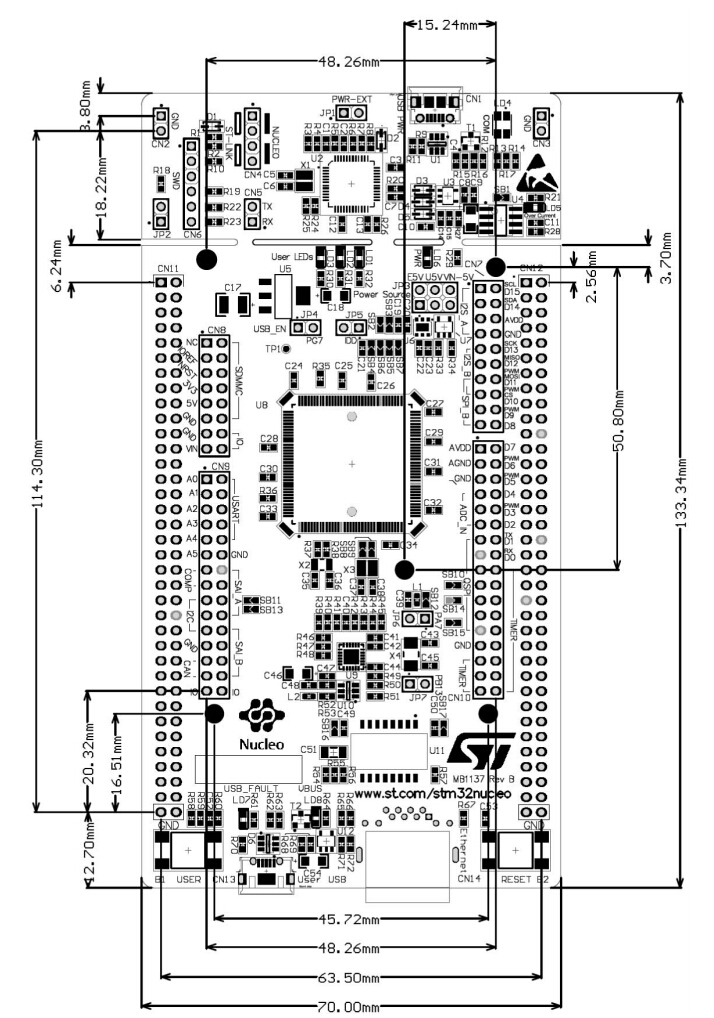

- #STM32F446ZE NUCLEO BOARD PINOUT INSTALL#
- #STM32F446ZE NUCLEO BOARD PINOUT FULL#
- #STM32F446ZE NUCLEO BOARD PINOUT SOFTWARE#
USB 2.0 Cable - A-Male to Mini-B Cord to connect PC to ST-LINK.STM32 Nucleo board (in our example we will use NUCLEO-L053R8, but you can use the one you prefer, as already said all Nucleo boards are pinout compatible).
#STM32F446ZE NUCLEO BOARD PINOUT INSTALL#



To start the project, you must first select the MCU and then initialize and configure the peripherals the user wants to use. The framework used is Eclipse®/CDT, as tool-chain for the development is used GCC toolchain and GDB for the debugging. STM32CubeIDE allows using a single platform to configure peripherals, to generate/compile/debug the code for STM32 microcontrollers and microprocessors.
#STM32F446ZE NUCLEO BOARD PINOUT SOFTWARE#
STM32CubeIDE is a development tool and supports multi operative system (SO), which is part of the STM32Cube software ecosystem. See Matrix of tested boards.We will use for our examples STM32CubeIDE released by ST and completely free.
#STM32F446ZE NUCLEO BOARD PINOUT FULL#
STMicroelectronics Morpho extension pin headers for full access to all STM32 I/Os.RTC: subsecond accuracy, hardware calendar.USB 2.0 full-speed device/host/OTG controller with on-chip PHY.Low power: Sleep, Stop and Standby modes.32 kHz oscillator for RTC with calibration.1.7 V to 3.6 V application supply and I/Os.LCD parallel interface, 8080/6800 modes.ARM®32-bit Cortex®-M4 + FPU + ART Accelerator™.The STM32 Nucleo-144 board does not require any separate probe, as it integrates the ST-LINK/V2-1 debugger/programmer and it comes with the STM32 comprehensive software HAL library, together with various packaged software examples, as well as a direct access to the ARM®mbed™online resources. The ST Zio connector, which is an extension of Arduino™ Uno, provides access to more peripherals and ST morpho headers make it easy to expand the functionality of the Nucleo open development platform with a wide choice of specialized shields. The STM32 Nucleo-144 board provides an affordable and flexible way for users to try out new concepts and build prototypes with the STM32 microcontroller, choosing from the various combinations of performance, power consumption and features.


 0 kommentar(er)
0 kommentar(er)
